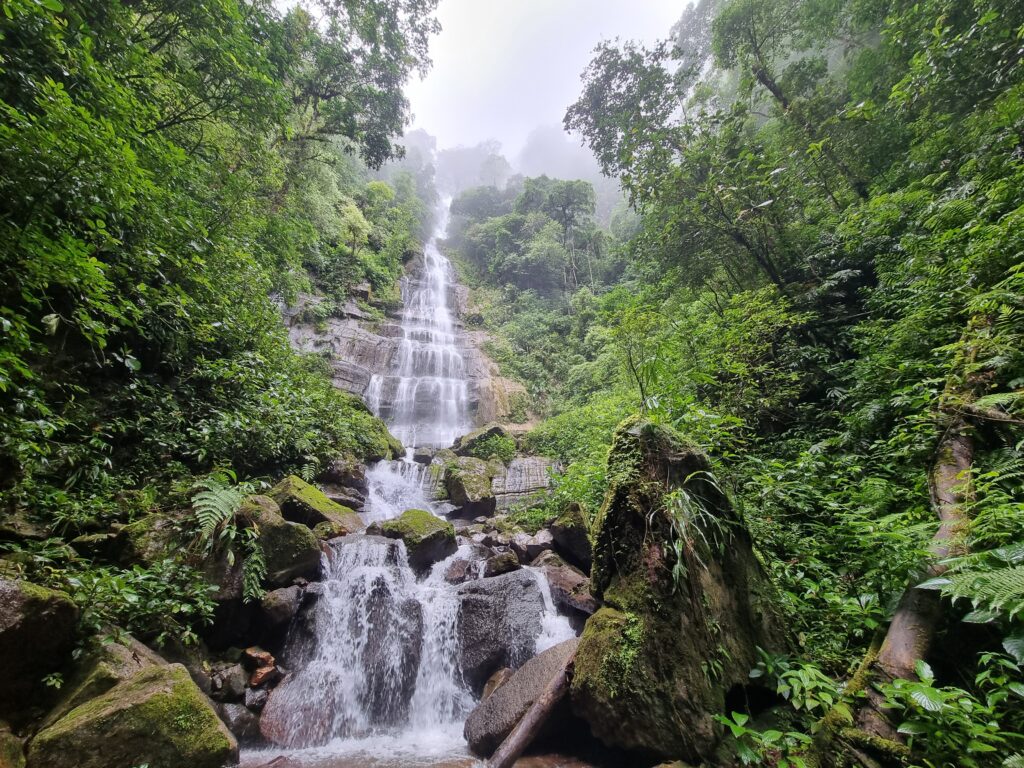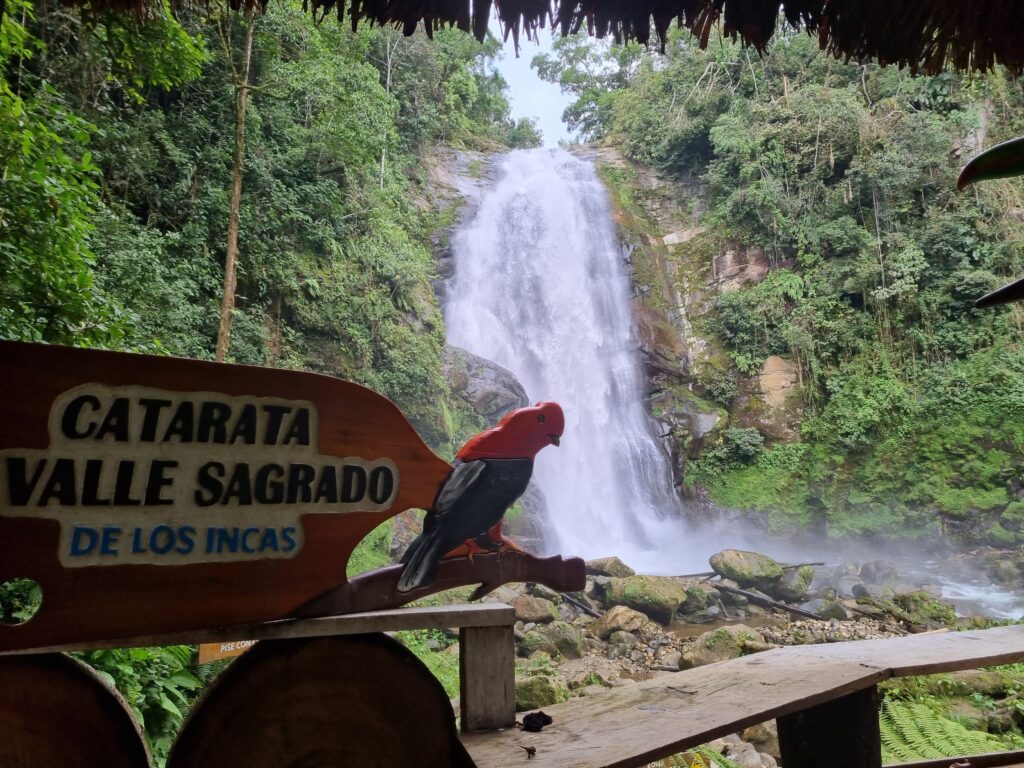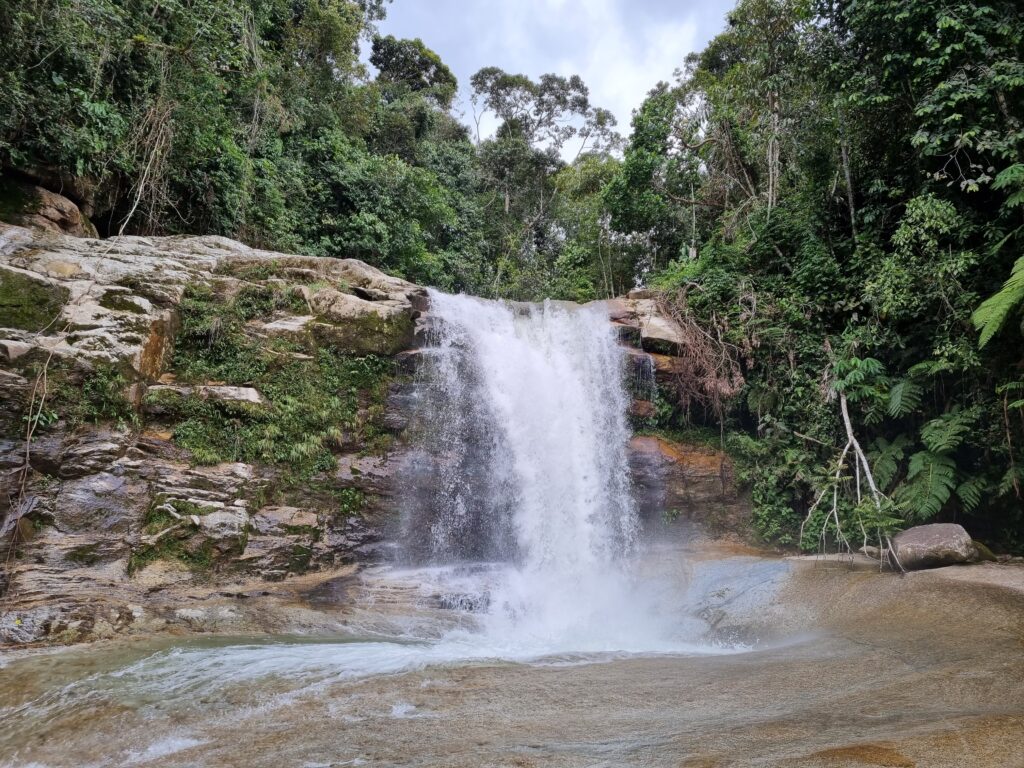When it comes to Peru’s hidden gems, Satipo is at the top of the list. Tucked away in the heart of the ceja de selva, its beauty is only outdone by its latest rebound. From earthquakes to terrorism, this area has been through hell and back. These unfortunate series of events wreaked havoc on its inhabitants, but Satipo still stands strong. This is due to a type of resilience that only tragedy can produce, and its unbeatable location in Junín is a world of its own.
Blessed with over 176 waterfalls, Satipo’s natural beauty and surrounding attractions can seduce even the most jaded traveler. Its name comes from the Ashánincas and stands for “los que llegan”, which references the many colonizers that arrived and tried to tame this wild land. Petroglyphs in the region date back to as early as 3,500 years ago. It was first inhabited by the Ashánincas and multiple other tribes that would eventually battle the Incas. Their intimate knowledge of the jungle allowed them to beat a massive empire, but the Incas were only a hint of what was to come.
The next wave of visitors were Europeans, which kicked off a new era of volatility. The Franciscans reached the area in 1673 and immediately began converting the natives to their religion. They founded the settlement of Santa Cruz and built orphanages and schools that are still maintained to this day. Despite these interactions the area remained mostly uncolonized due to multiple native uprisings throughout the 18th century.
It wasn’t until 1940 that the Satipo District was created by the Peruvian President Manuel Prado. The area was finally accessible to other parts of the country through roads, but it was about to get disconnected once again. In 1947 a powerful earthquake rocked Satipo, killing 2,333 people. The consequent floods and devastation destroyed any roads connecting Satipo to the outside world and plunged the area in isolation until 1960.
Right when things were looking up, Satipo became another victim of circumstance. During the rise of the terrorist group Sendero Luminoso in the late 80’s, Satipo’s dream of building a better future turned into a nightmare. Its remote location, virgin rainforest, and noticeable lack of government oversight made it the perfect hideout for terrorist groups. They wreaked havoc on the local tribes by murdering the men, women, and children of villages that dared resist them. This wave of horrific violence and massacres left many areas without any adult age males and forced many locals to flee to neighboring regions.
Thanks to an extremely aggressive and internationally condemned military offensive from the Fujimori government, most of Peru was freed from the grips of terrorism. Satipo wasn’t an exception, and the Peruvian government gradually regained most of the control in the area. There is now a military base in Mazamari and more presence from the state, which makes it safe for people from all parts of the world to visit.
Satipo’s salvation didn’t come the military or imprisoned ex-presidents, it came from nature. I have explored most of Peru, and this area steals the show. From its 176+ waterfalls to abundant amounts chocolate and coffee, Satipo is breathtaking. The people are extremely nice and look out for those who come correct. This is the essence of Peru’s jungle, and its beaty is hard to describe without sounding sensational.
I could write an entire book about this magical world, and it still wouldn’t do Satipo justice. For this reason, let’s focus on the waterfalls. Without further ado, these are the best waterfalls in Satipo. It’s far from a comprehensive list, but these are the top attractions that deserve the spotlight the most. Prepare to dive headfirst into Peru’s most underrated waterfalls. It’s an adventure to reach them, but well worth taking!
Top 3 Waterfalls In and Around Satipo

Waterfall #1: Catarata Castillo Encantado – This epic attraction is nestled deep in the neighboring district of Mazamari. After an hour drive from Satipo, the real journey begins. Due to it being the rainy season we hiked for 3 hours through the jungle to reach the Catarata Castillo Encantado. It was grueling trekking through muddy trails, but the sacrifice was worth it. This waterfall has 2 main levels that cascade down multiple falls. At a distance it looks like a massive wedding cake, so make the trek and indulge in its majestic beauty!

Waterfall #2: Catarata Valle Sagrado de Los Incas – Visiting this catarata provides the full jungle experience. The first leg of the journey consists of driving from Satipo to the Rupa Rupa region in the Selva Alta. After winding through pineapple fields and crossing small rivers the next stop is the native community of Alto Cubantía. This is the perfect jump off point to refuel with caldo de gallina or pollo a la plancha since it’s about an hour hike to the waterfalls.
Once again the rainy season made this hike take twice as long for us, but it’s such a hypnotic journey we found the energy to continue. The trail winded up through the jungle mountains and led us into the clouds. It’s a mystical experience, so by the time the falls were reached it felt like we had entered a sacred site. The waterfall is 42 meters tall so its thunderous water-flow makes an impression!

Waterfall #3: Catarata Tina de Piedra – Affectionately called the Imperitaja by the locals, this waterfall easily earns its spot as one of the 7 maravillas de Satipo. It’s located in San Martin de Pangoa and is a lot easier to access than the aforementioned falls. This is due to the fact that almost the entire journey is made by car.
Even though it’s less of a sacrifice to reach, this waterfall is too unique to ignore. Its water elegantly falls 16 meters into a rock pool. Its stones are so smooth due to the force of the falling water that the pool appears to be chiseled by the gods. This waterfall is nothing short of spectacular, so make sure to visit it when in Junín!